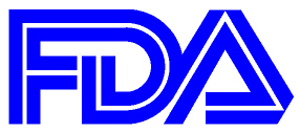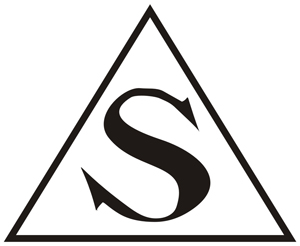
 On Friday, the Food and Drug Administration approved a biosimilar version of Amgen's Neupogen® (filgrastim) product for sale in the U.S. This is the first biosimilar to be approved under the provisions of the Biologics Price Competition and Innovation Act (BPCIA), which was part of the healthcare reform package passed in 2010 and commonly referred to as "Obamacare." Sandoz (a division of Novartis) will sell its biosimilar under the brand name Zarxio™.
On Friday, the Food and Drug Administration approved a biosimilar version of Amgen's Neupogen® (filgrastim) product for sale in the U.S. This is the first biosimilar to be approved under the provisions of the Biologics Price Competition and Innovation Act (BPCIA), which was part of the healthcare reform package passed in 2010 and commonly referred to as "Obamacare." Sandoz (a division of Novartis) will sell its biosimilar under the brand name Zarxio™.
 The drug is a recombinantly produced version of human granulocyte colony stimulating factor (methionyl-human granulocyte colony stimulating factor or r-metHuG-CSF) and is used to stimulate neutrophil production in patients undergoing chemotherapy. Amgen has obtained FDA approval for Neupogen® for treating the following five conditions:
The drug is a recombinantly produced version of human granulocyte colony stimulating factor (methionyl-human granulocyte colony stimulating factor or r-metHuG-CSF) and is used to stimulate neutrophil production in patients undergoing chemotherapy. Amgen has obtained FDA approval for Neupogen® for treating the following five conditions:
• Cancer patients receiving myelosuppressive chemotherapy;
• Cancer patients with acute myeloid leukemia receiving induction or consolidation chemotherapy;
• Cancer patients undergoing bone marrow transplantation;
• Patients undergoing autologous peripheral blood progenitor cell collection and therapy; and
• Patients with severe chronic neutropenia.
 Sandoz provided the FDA with a wide variety of evidence of biosimilarity since it filed its application under Section 351(k) of the Food, Cosmetic and Drug Act last July; this evidence included "structural and functional characterization, animal study data, human pharmacokinetic and pharmacodynamics data, clinical immunogenicity data and other clinical safety and effectiveness data" and, importantly, an absence of immunogenicity in human subjects, together demonstrating the biosimilarity of Sandoz product Neupogen® according to the FiercePharma website. In particular, Sandoz performed a head-to-head comparison between its biosimilar drug and Neupogen® showing a level of biosimilarity sufficient for the FDA to approve Zarxio™ for all of Amgen's approved indications.
Sandoz provided the FDA with a wide variety of evidence of biosimilarity since it filed its application under Section 351(k) of the Food, Cosmetic and Drug Act last July; this evidence included "structural and functional characterization, animal study data, human pharmacokinetic and pharmacodynamics data, clinical immunogenicity data and other clinical safety and effectiveness data" and, importantly, an absence of immunogenicity in human subjects, together demonstrating the biosimilarity of Sandoz product Neupogen® according to the FiercePharma website. In particular, Sandoz performed a head-to-head comparison between its biosimilar drug and Neupogen® showing a level of biosimilarity sufficient for the FDA to approve Zarxio™ for all of Amgen's approved indications.
Neupogen® is a $1.2-1.4 billion dollar per year product for Amgen and part of the significance of FDA approval is economic. Industry estimates have Sandoz selling Zarxio™ for 15-30% less than Amgen's current price, which estimates are expected to reduce the cost of the drug by an equivalent amount once this biosimilar becomes accepted by physicians. Unlike conventional "generic," generally small molecule, drugs (which cause upwards of 90% reductions in drug prices from the innovator brand price), biosimilar drugs are both more complex than small molecule drugs and are administered by physicians (typically by injection) and thus continue to actively involve medical personnel during a course of treatment. Consequently, physician acceptance of biosimilar drugs is much more of an issue than for generic drugs and thus market penetrance is expected to be delayed for 1-5 years, even by Sandoz. These estimates are in line with industry expectations for biosimilar drugs in general; for example, Express Scripts has estimated that while U.S. healthcare costs may be reduced by about $250 million between 2015 and 2025, biosimilar sales worldwide will only increase from $1.3 billion to $35 billion by 2020, even taking into account the robust approval climate for biosimilar drugs on Europe (where the EMEA has approved 21 biosimilar drugs over the past 10 years; it should be noted that cost savings in Europe from biosimilars amount to about a 10% reduction).
(For those paying attention, another reason that marketing of Sandoz's Zarxio™ product may be delayed is that Amgen and Sandoz are embroiled in litigation over whether Sandoz is required to participate in the litigation provisions of the BPCIA); that case is ongoing (see "Sandoz Inc. v. Amgen Inc. (Fed. Cir. 2014)").
The other basis for considering approval of Zarxio™ to be significant is that, as the first biosimilar approved, it will be a bellwether for how well the FDA has implemented the BPCIA and performed in its role in protecting public health. The complexity of both biologic drugs themselves (which typically comprise thousands of atoms; the chemical formula of filgrastim for example is C845H1343N223O243S9) and the methods by which they are made (typically using recombinant cells expressing genetically engineered genes transferred from one organism (here, human) to another such as bacteria) provide much greater challenges for the agency in performing its review of safety, potency and efficacy, and while the EMEA in Europe has successfully approved biosimilar drugs for a decade, in the U.S. doubts are likely to remain until experience (both the agency's and the public's) has shown them to be unfounded.
There is one aspect of the FDA's approval of Zarxio™ that remains controversial, and that is the non-proprietary (or common) name the agency has given to Sandoz's product. The name, filgrastrim-sndz, has been called a "placeholder" by the agency because it has not yet decided whether to give different names to biosimilar versions of branded biologic drugs (as innovator biotechnology companies have advocated to ensure that any adverse events be properly ascribed to the biosimilar) or to use the same name as the innovator biologic drug (as urged by groups like the Generic Pharmaceutical Association (GPhA) and health organization to minimize the chance of confusion by medical personnel). These sentiments were voiced on Friday by Ralph G. Neas, President and CEO of GPhA, who stated that his organization "reiterate[s] our stance that the Agency's departure from the currently accepted international nonproprietary name (INN) system could disrupt the ability to track and dispense these medicines, risking provider confusion and patient safety."
One thing the FDA did not do was approve Zarxio™ as an interchangeable product, because inter alia the agency has not yet developed standards for making this determination. In addition to the absence of "no clinically meaningful differences" required to be shown between the branded (or reference product sponsor's) product and the biosimilar drug for approval as a biosimilar, to be interchangeable there must be no differences in outcomes when a patient is switched to an interchangeable biosimilar drug product than occur when the innovator's product is administered. Interchangeability when achieved will have the advantage that switching to the interchangeable version will not require physician approval and will be eligible for at least a one-year exclusivity period for the successful interchangeable biosimilar applicant.
This is but the first of many biosimilar approvals waiting FDA action; these include applications by Apotex for its version of Neupogen® (which was accepted by the FDA last month and is sold in Europe under the name Grastofil) as well as a biosimilar version of Amgen's Neulasta® (a PEGylated version of the molecule). Pundits and politicians have pontificated about the benefits to be had by adopting a biosimilar approval pathway in the U.S., and those predictions have begun the process of being tested with approval of Zarxio™.